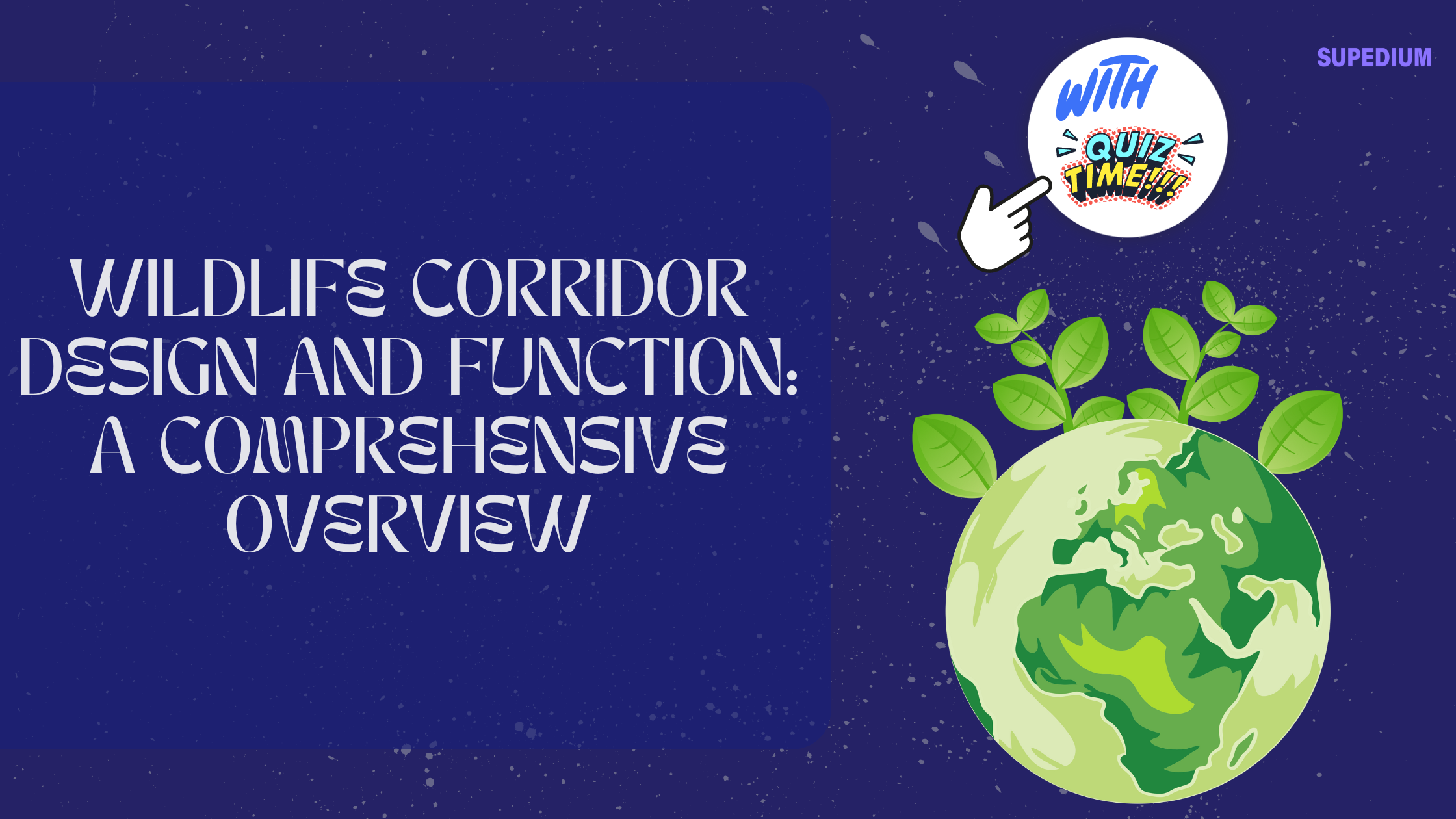Table of Contents
![]()
Introduction
Wildlife corridors are vital components of conservation strategies designed to ensure the health and resilience of ecosystems. These corridors, also known as wildlife corridors, serve as pathways that allow animals to move between habitat patches, facilitating gene flow and reducing the adverse effects of habitat fragmentation. By providing connectivity, wildlife corridors help maintain biodiversity, promote ecological processes, and mitigate human-wildlife conflicts.
Principles of Wildlife Corridor Design
Core Concepts
Wildlife corridors are integral to maintaining ecological connectivity. Connectivity refers to the ability of animals to move freely between different areas of habitat, which is crucial for their survival. Habitat fragmentation, often caused by human activities such as urban development and agriculture, divides large habitats into smaller, isolated patches. This fragmentation can impede animal movement, reduce genetic diversity, and disrupt ecological processes.
Design Considerations
When designing wildlife corridors, several key factors must be considered:
- Scale and Scope: Wildlife corridors can vary in scale, from local to regional. Local corridors might connect small, isolated habitat patches, while regional corridors can span vast landscapes, linking multiple habitats across larger distances. Understanding the scale is essential for determining the corridor’s design and implementation.
- Habitat Suitability: The design of a wildlife corridor must account for the types of habitats it connects, such as forests, grasslands, or wetlands. Each habitat type offers different resources and environmental conditions, and the corridor should provide suitable conditions for the species it aims to support.
- Ecological Needs of Species: Different species have unique requirements for movement, such as specific types of vegetation or terrain. Corridor design must consider these needs to ensure that the corridor effectively supports the targeted species.
Methods of Designing Wildlife Corridors
Spatial Analysis
Modern wildlife corridor design relies heavily on spatial analysis. Geographic Information Systems (GIS) and landscape ecology tools help map and analyze landscapes to identify critical areas for connectivity. These tools allow conservationists to visualize how animals move through their environment and to identify potential obstacles to their movement.
Mapping and Assessment
Effective corridor design involves mapping critical areas and assessing barriers to wildlife movement. This process includes identifying areas where habitat fragmentation is most severe and evaluating potential threats, such as roads or urban development. By understanding these factors, planners can design corridors that address these challenges.
Modeling and Simulation
Predictive models and simulations are used to assess the effectiveness of different corridor designs. These tools simulate animal movement and habitat use to predict how well a proposed corridor will function. By analyzing these simulations, conservationists can refine their designs to better meet the needs of wildlife.
Types of Wildlife Corridors
Linear Corridors
Linear corridors are the most common type and include riverine corridors and roadside or rail corridors. Riverine corridors follow waterways, providing crucial habitats and travel routes for many species. Roadside and rail corridors often include green strips alongside transportation routes, which can help mitigate the barriers these infrastructures create.
Patch Corridors
Patch corridors connect isolated habitat patches, such as forest fragments or grasslands. These corridors can be crucial for species living in fragmented landscapes, as they provide pathways between otherwise disconnected habitats. Greenways and ecological networks are examples of patch corridors designed to enhance connectivity.
Vertical and Horizontal Corridors
Vertical corridors refer to connections within different layers of the environment, such as forest canopies. Horizontal corridors span across landscapes, including underpasses and overpasses for roads. Both types of corridors are important for facilitating animal movement and ensuring that different habitat layers are accessible.
Implementation Strategies
Stakeholder Engagement
Successful implementation of wildlife corridors requires collaboration with various stakeholders, including landowners, local communities, and conservation organizations. Engaging these groups ensures that the corridor design meets both ecological goals and community needs. Education and outreach efforts help foster support and cooperation.
Policy and Legislation
Policy and legislation play a critical role in the implementation of wildlife corridors. Conservation laws and regulations can provide the framework for protecting corridors and incentivizing land conservation. Programs that offer financial or technical support to landowners can encourage participation in corridor initiatives.
Management and Maintenance
Once implemented, wildlife corridors require ongoing management and maintenance. Regular monitoring helps track the effectiveness of the corridor and identify any issues that need to be addressed. Adaptive management practices allow for adjustments based on new information or changing conditions.
Case Studies
Successful Wildlife Corridor Projects
Several successful wildlife corridor projects serve as models for conservation efforts. The Yellowstone to Yukon Conservation Initiative in North America is a prominent example, linking protected areas across the continent to support species migration. In Europe, the Alpine Wildlife Corridors project has successfully connected habitats across mountain ranges, enhancing biodiversity and ecosystem health.
Lessons Learned from Challenges
Challenges in corridor design and implementation provide valuable lessons. Addressing human-wildlife conflicts, such as those arising from livestock predation, is essential for maintaining community support. Overcoming ecological and logistical barriers, such as constructing wildlife crossings in urban areas, requires innovative solutions and collaboration.
Future Directions and Innovations
Advances in Technology
Advancements in technology, such as remote sensing and tracking technologies, are revolutionizing wildlife corridor design. These tools provide detailed data on animal movements and habitat use, allowing for more precise and effective corridor planning.
Integration with Urban Planning
Integrating wildlife corridors with urban planning is becoming increasingly important as urban areas expand. Urban green spaces and wildlife-friendly infrastructure, such as wildlife crossings and green roofs, can help balance development with conservation goals.
Global Perspectives and Collaborative Efforts
Global perspectives and collaborative efforts are essential for addressing large-scale conservation challenges. International conservation networks and cross-border initiatives, such as the Transboundary Protected Areas program, facilitate cooperation and resource sharing among countries.
Conclusion
Wildlife corridor design and function are critical to maintaining ecological connectivity and preserving biodiversity. Effective corridor design involves understanding ecological principles, employing advanced technologies, and engaging with stakeholders. As conservation efforts continue to evolve, innovative solutions and collaborative approaches will play a key role in ensuring the success of wildlife corridors. By investing in these vital pathways, we can support the health and resilience of ecosystems for future generations.






Be the first to comment